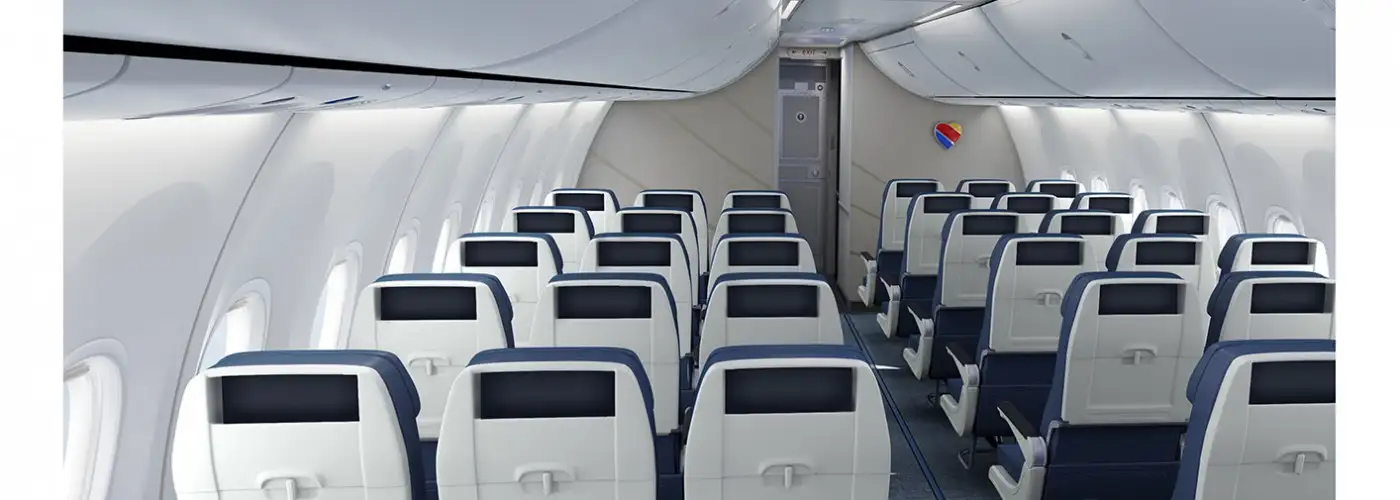Southwest plans to install wider seats in its 737-800s and 737- MAX planes starting next year. The seat cushions will, in fact, be an inch or so wider than Southwest’s current models, and wider than seat cushions on most other airlines’ 737s as well. But that doesn’t mean you’ll get more space than before.
The explanation for this seeming contradiction is simple: The total side-to-side space won’t change. Instead, the new seats will have less space in the gap between adjacent cushions and probably thinner armrests. So you’ll have a bit more room for your butt, but no more room for your shoulders.
Related: Six Ways to Get the Best Coach Seat on an Airplane
The fundamental problem is that the width of the seat cushion is the wrong measurement for tabulating seat width. What really matters is the space you have at shoulder level, so the best way to measure that width is between armrest midpoints. By that measure, the true space in Southwest’s new seats will be essentially the same as in its current seats—or, for that matter, the seats it had 10 years ago. If each new seat was really to be an inch wider, the aisle would have to be six inches narrower, which is clearly impossible.
The first ever (so far as we know) comparison of airline seat width data, published in 1978 by the long-gone newsletter, Economy Traveler, tabulated measurements of the distance between armrest centers. At that time, airlines did not publish seat width data at all, so the newsletter based its comparison on technical data from aircraft manufacturers. Unfortunately, when airlines started to post width data, they adopted the less-useful measurement of space between armrests, or cushion width, typically two inches less than midpoint measures. Since then, SeatGuru and other sources have posted the cushion width.
The normal cushion width for 737s, as posted on SeatGuru, is 17 inches, maybe plus a fraction. A few airlines claim 18-inch width in 737s, but there is no way that, given the same total cabin width, their seats can actually be an inch wider than on most other lines. Instead, their seats are designed with less hardware between adjacent cushions. In another bit of misinformation, last September, USA Today published a story claiming that airline seats had shrunk by two inches since the 1985-1991 period. Not so. Those early measurements, taken from Consumer Reports Travel Letter, were based on armrest-midpoint data, not cushion width. In fact, seat width has remained unchanged since that time, except where airlines added an extra seat in each row.
As to total “space,” the final result will depend on whether Southwest tightens the front-to-rear seat spacing. Usually, when airlines install the latest, thinnest seats, they decrease the pitch, which is the front-to-rear spacing of seat rows. They inevitably claim that, with the new thin seatbacks, “passengers won’t notice the difference,” but passengers inevitably do notice the reduced space. Presumably, Southwest will tell us soon about its plans for seat pitch. But if you think you will really get more room, we have a couple of really good deals on bridges.
You Might Also Like:
We hand-pick everything we recommend and select items through testing and reviews. Some products are sent to us free of charge with no incentive to offer a favorable review. We offer our unbiased opinions and do not accept compensation to review products. All items are in stock and prices are accurate at the time of publication. If you buy something through our links, we may earn a commission.
Related
Top Fares From
Today's Top Travel Deals
Brought to you by ShermansTravel
France: 8-Night Paris, Avignon & Nice...
Infinity Worldwide Vacations
 vacation
$2880+
vacation
$2880+
Poconos: 3 Nts in Garden of...
ResortsAndLodges.com
 hotel
$305+
hotel
$305+
7-Nt Canada & New England Cruise,...
Princess Cruises
 cruise
$839+
cruise
$839+




